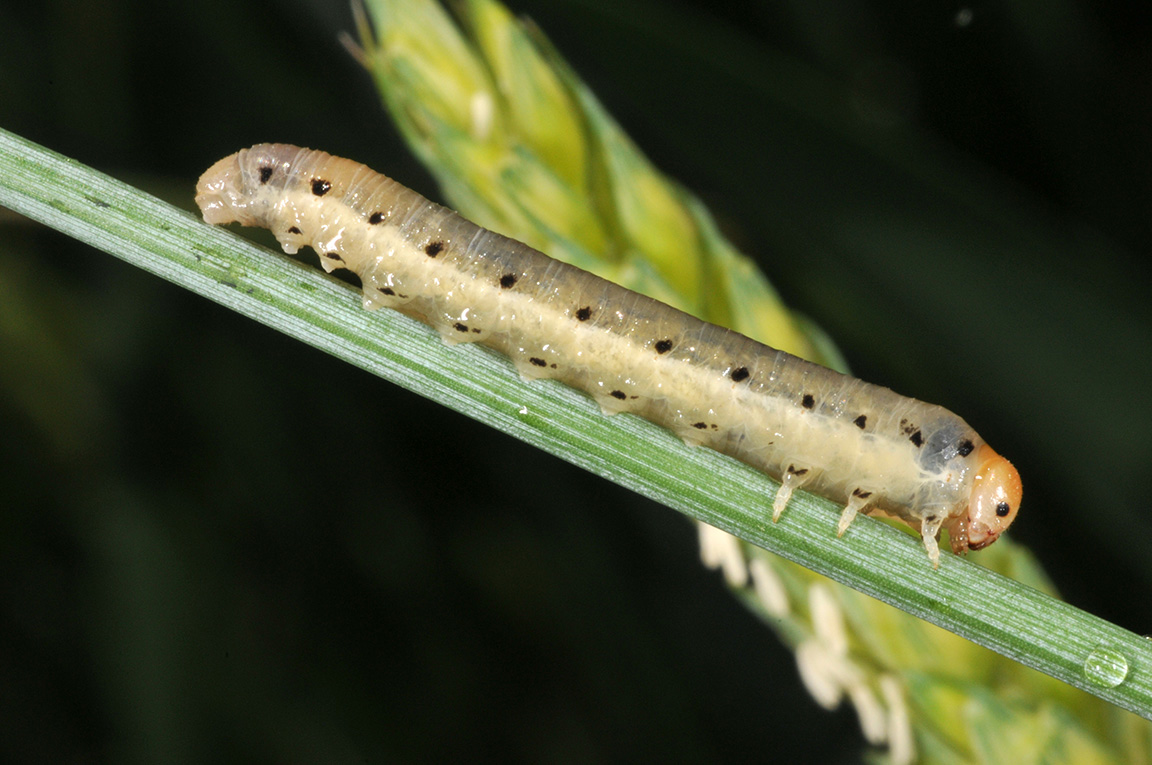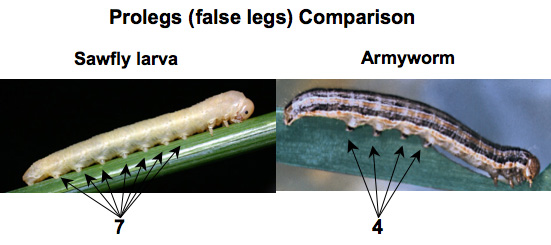Small, caterpillar-like larvae, often confused with armyworm, can occasionally be found in wheat and some other grassy cover crops. These are not caterpillars at all, but are sawfly larvae, likely grass sawfly (Pachynematus sp.). Adult sawflies are insects with four wings that are distant relatives of the honeybee. They can be thought of as primitive wasps, but they do not have a stinger. The larvae are usually plant feeders and a few are pests of home gardens (rose sawfly or the confusingly named pear slug, for example).
The sighting of foliage feeding sawfly larvae in wheat fields is infrequent in the Midwest. And although this species feeds on the leaves, it is minor pest. This is more of a curiosity than anything else, and an opportunity to learn the differences between different insect larval types – always fun! Full size larvae, about 1.25 inches, may feed on stems causing head clipping much like armyworm. Another closely related insect, the wheat stem sawfly, occasionally causes problems in northern regions of the United States. This species, as the name implies, feeds only in the stem causing lodging and bleaching of heads in small grains.
Unlike armyworm, which feed at night or on dark, cloudy days, sawfly larvae feed throughout the day. Another difference takes very close inspection – caterpillars have three pairs of true legs just behind the head and another five pairs of prolegs on their abdomen. Sawflies also have the three pairs of true legs up front, but also have six or more pairs of prolegs further back on the abdomen. Because sawflies’ coloration blends into the vegetation, finding them is a challenge. For those out scouting small grains for armyworm infestations, congratulate yourself for finding these look-alikes, and be assured that you are being alert. Happy scouting!




